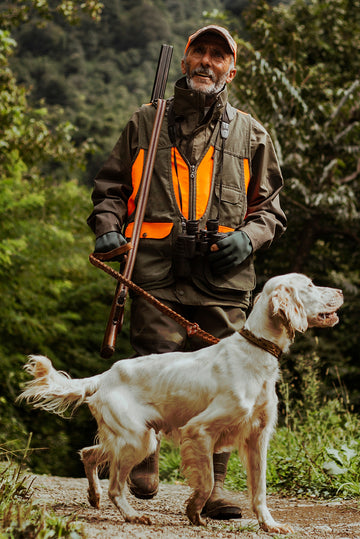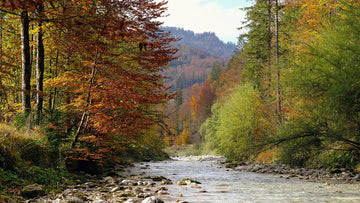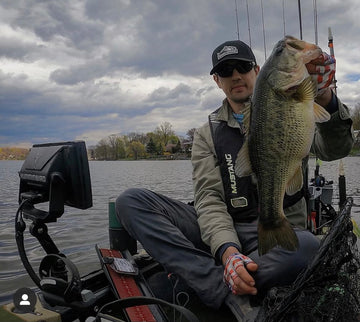Are you tired of pounding the same old pavement when going for a run? Trail running offers more than just a great workout, it also offers a change of scenery anytime you want one! When running on the trail, you must use your entire body to traverse obstacles and sudden twists and turns. Plus, you must be mindful of how and where you’re moving your body, or you put yourself at risk of a fall or twisted ankle. However, you’re more likely to develop injuries on the road than you are on the trail. Avoid injury and hit the trail running with the basic guide below.
- Pick a Trail: When starting out, choose a trail that is shorter than the distance you can typically run on a paved surface. Estimate the time it will take to run the trail by using a Pace Calculator. Once you have been on several trail runs, you will get a good feel for the distance and elevation changes that work best for you. Don’t obsess over paces though. Changing terrain and elevation gain and loss, not to mention tricky footing, will require that you slow down and shift gears on a regular basis. Trail running is all about maintaining a steady effort, not a rhythmic pace.
- Be One with the Trail: After you have selected the trail for your run, obtain a map, review reports and any data of the area. Look to see if the trail is a loop, or if you will need to backtrack back to your car. Watch out for intersecting trails that could potentially take you down the wrong path and look for a good spot for a break or two such as a river or mountain peak. Know the trail inside and out before you head out. When starting out, always run with a buddy, and let someone know where you will be. Bring you phone or some type of communications device in case of emergency.
- Check the Weather: The week before and even a couple hours leading up to your run, be sure to check the weather. Not only will it let you know about unexpected conditions in the area, but will also give you great information on how to dress. If the forecast changes suddenly and storms are predicted for the day and time of your run, reschedule. It’s better to be safe than sorry!
- Choose the Right Fuel: So, what should you eat before and during your trail run? The large assortment of chews, bars and drink mixes at your local shop can be overwhelming, so experiment until you find what works best for you. A good rule of thumb: for any run over 90 minutes, you should eat and hydrate every 20-30 minutes. It sounds like a lot, but if you start feeling tired, it’s already too late.
- Treat Your Feet Right: Take the time and money to invest in quality socks and trail running shoes such as The North Face Vectiv shoe. Proper shoes are crucial for any surface, but this step is even more important when you step off the pavement and onto the trail. Trail running shoes are designed to increase traction and to help protect your feet from rocks and debris on the trail.
- Dress Like a Pro: Always make sure you’re dressed properly for the terrain and weather. Go for clothing made with synthetic materials instead of cotton. Once cotton gets damp or wet, it will stay that way and can lead to chaffing. To adjust easily to temperature fluctuation throughout the day dress in layers that can be taken on or off easily.
- Safety Essentials: This is a must-have list of items that you may need to stay safe in the outdoors in an emergency, even if forced to stay overnight.
- Hat or Beanie
- Gloves
- Sunscreen
- Emergency Blanket
- Headlamp
- First-Aid Kit
- Waterproof Matches
- Extra Nutrition
- Hydration
- Pack it Up: Now that you know what you need to bring with you, here’s where we pack and the lighter the better! Always go for the lightest option available. For example, when packing food, opt for freeze dried food packs instead of normal everyday meals.
- Practice Trail Etiquette & Leave No Trace: When you first get on the trail, you’ll be tempted to go gung-ho, but you will find yourself tuckered out in no time! Remember your estimated time and keep a steady effort that you can maintain. Also, don’t forget to practice proper trail etiquette. If you are on a shared trail, yield to mountain bikes and horses. If runners are heading in your direction and the trail is too narrow for you both to pass, the runner(s) who are on the uphill side of the trail should step off the trail, allowing those who are on the downhill side to pass before continuing.
It’s up to everyone to keep our parks and our trails clean. Whatever you bring in, bring out! The Leave No Trace 7 Principles are the rules to live by. If you aren’t familiar with them, give them a read before your first trail run.
Now that you know the basics, stop by one of our locations and our knowledgeable staff will help you get the trail running gear you need to get started!
Gear up for adventure with Ramsey Outdoor!















